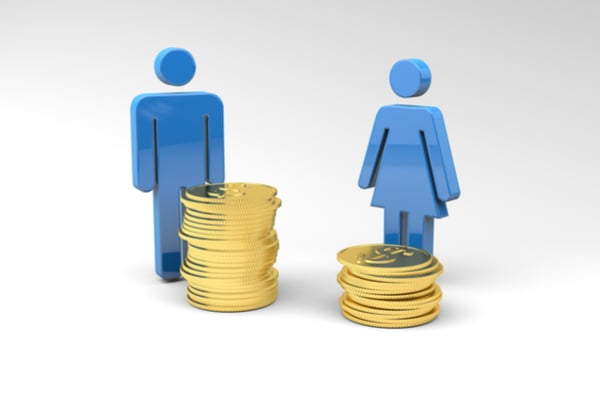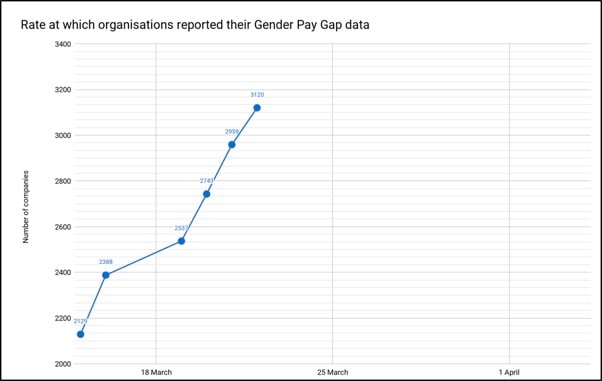Exclusive: new CMI analysis reveals scale of "glass pyramid" across UK business
 With two weeks until the gender pay gap reporting deadline, exclusive CMI analysis reveals the true picture about gender pay in corporate Britain, and it’s not pretty...
With two weeks until the gender pay gap reporting deadline, exclusive CMI analysis reveals the true picture about gender pay in corporate Britain, and it’s not pretty...
From 6 April 2017, employers in Great Britain with more than 250 staff were required by law to publish their gender pay gap data. Altogether, 9,000 companies are expected to report by the deadline of 4 April 2018; so far (as of 22 March 2018), according to CMI’s analysis, only a third have done so. Many of Britain’s biggest and best-known companies have yet to release their figures.
Of those that have published their gender pay gap data, the broadcaster Channel 4 revealed the highest pay disparity among media companies, with women earning 28.6% less in average hourly pay than men. The biggest bank to reveal its data so far, HSBC, has announced a startling 59% gender pay gap at its UK banking units; there is also a mean gender bonus gap of 86% at HSBC Bank plc, which is the biggest of the lender’s seven entities in Britain and employs 23,507 people.
With the final deadline fast approaching, and all gender pay gap data being made publicly available, CMI is conducting daily analysis to understand the trends beneath the topline data. From the 3,120 organisations that have so far reported (remember, that’s out of an expected 9,000), here is what we are learning:
- The mean gender pay gap is 13%
- The media gender pay gap is 12%
- The average mean bonus pay gap is 18%
- The average median bonus gap is -6%
Ann Francke, CMI’s chief executive, responding to this first cut of the numbers, says that the data shows a familiar picture of the ‘glass pyramid’ – too many women at the bottom of organisations and too few at the top. She points out that for companies with a pay gap greater than 31%, women hold just three in ten of senior manager and director-level roles.
The gender pay gap, she said, is a consequence of the fact that there are more men in the top and upper middle pay quartiles in most organisations (see table below, which shows the “Glass pyramid” effect for the whole current gender pay gap data set).

“The gender pay gap is a business issue that is holding us all back,” said Francke. “Employers need to recognise that the transparency of the reporting regulations is the chance to shine a light on the underlying causes,” she said. “Our research shows that men in management are 40% more likely to be promoted than women in equivalent roles.
“Changing workplace culture is key. Employers need to fix the ‘broken windows’ – the range of everyday biased attitudes, actions and practices that contribute to the wider issues preventing women from progressing. Whether that’s a lack of flexible working policies, not putting women forward for promotion because they have children or throwaway comments — calling out, challenging and changing these behaviours will help create inclusive cultures where both women and men can thrive.”
Sluggish
While it’s clear that diversity improves business performance (McKinsey estimates that gender equality will will add £150bn to UK economy by 2025), the slow pace with which large organisations have reported their data suggests that gender pay equality is not considered an urgent priority for some firms (see CMI chart below). Critics have suggested some companies are hoping to bury their embarrassing figures amid a hoard of late filings. CMI Women, by contrast, is campaigning to get 1.5 million more women into management by 2024.

Join CMI on 9 April for a major open debate about Gender Pay Gap Reporting.
Definitions:
Mean gender pay gap. The average mean gender pay gap is the difference between the average male pay and the average female pay. CMI focuses on the mean gender pay gap as this can be affected by the lack of representation of women in the top two pay quartiles.
Median gender pay gap. The median is the figure that falls in the middle of a range when everyone’s wages are lined up from smallest to largest. The median gap is the difference between the employee in the middle of the range of male wages and the middle employee in the range of female wages.
Bonus. This is the gross value of any bonus payments, profit share payments, productivity and performance incentive, and commission. They must be received in the form of cash, vouchers, securities, securities options, and interest.
Main image credit: Shutterstock

Press & Media Enquiries
For more information or to request interviews, contact CMI's Press Team on 020 7421 2705 or email press.office@managers.org.uk


